Daulatabad Fort, situated in Maharashtra, is a remarkable hilltop fortress recognised for its strategic relevance and architectural splendour. Constructed in the 12th century, this fortress features formidable defences like massive walls, a complex series of moats, and a steep, winding approach designed specifically to deter invaders. Originally named Devagiri, it served as the capital of the Yadava dynasty and was later renamed by Sultan Muhammad bin Tughlaq. Its distinctive engineering and historical significance make it a compelling destination for history and architecture enthusiasts. Explore the captivating history and marvel at the fort’s lasting legacy by visiting Daulatabad today.
Daulatabad Fort Location
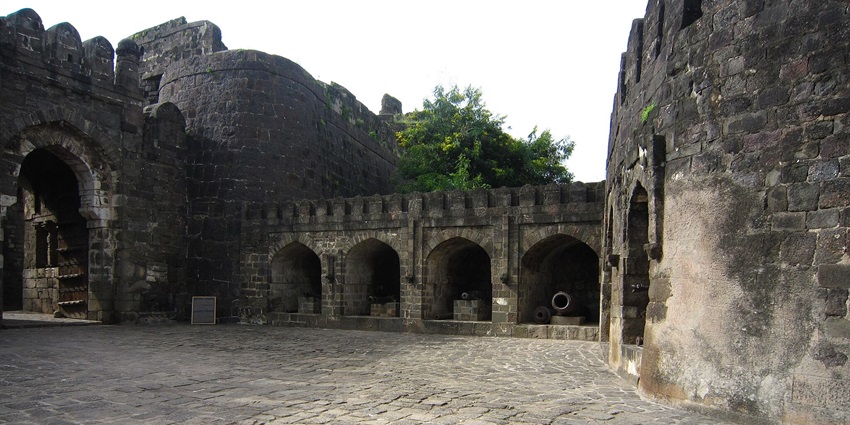
Photo: Ramji R / Wikimedia Commons
Daulatabad Fort, situated about 16 km northwest of Aurangabad, is accessible to visitors from the city. Approximately 27 km from the UNESCO World Heritage Site of Ellora Caves, it serves as a convenient addition to a historical tour in the region. From Mumbai, the distance to Daulatabad is around 335 km, and from Pune, it is around 250 km. The nearest airport and the closest railway station are only 2 km from the fort, providing easy access. This connectivity makes Daulatabad an ideal stop for those exploring Maharashtra’s rich heritage.
Suggested Read: Ahmednagar Fort
How To Reach Daulatabad Fort
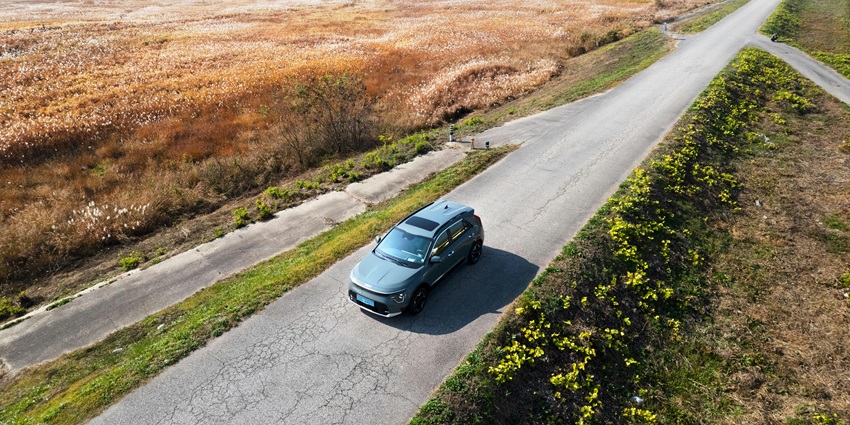
Photo: Hyundai Motor Group / Unsplash / Image For Representation Only
Reaching Daulatabad Fort Maharashtra is relatively easier with the various transportation options available to travellers.
By Train: The closest railway station is Daulatabad, a mere 2 km from the fort. However, for better connectivity, consider Aurangabad Railway Station, which lies approximately 16 km away. This station is well-linked to prominent cities such as Mumbai, Pune, and Hyderabad.
By Air: Aurangabad Airport is the nearest terminal, around 22 km from the fort. The airport operates regular flights from key urban centres like Mumbai, Delhi, and Hyderabad. From the airport, travellers can easily hire a taxi or catch a bus to continue their journey to the fort.
By Road: Daulatabad is reachable from Aurangabad, just 16 km away. National Highway 52 and State Highway 22 provide excellent connections to major cities, including Mumbai (335 km), Pune (250 km), and Nashik (220 km). Private vehicles or hired cabs are viable options for those travelling from nearby locations.
Places To Visit Near Daulatabad Fort
The region surrounding Daulatabad Fort is filled with historical landmarks and cultural sites that enhance the region’s rich heritage.
1. Ellora Caves
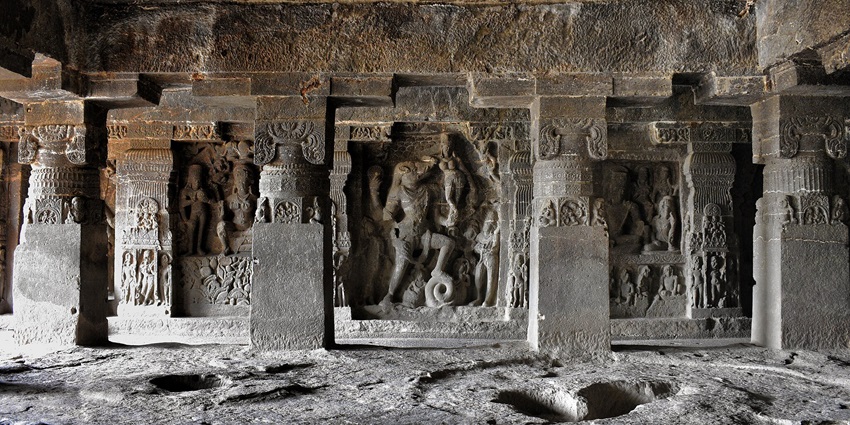
Photo: Abhideo21 / Wikimedia Commons
The Ellora Caves, situated merely 27 km from the Daulatabad Fort, represent a UNESCO World Heritage site and are among India’s most extraordinary archaeological treasures. This complex, which encompasses 34 caves ingeniously carved into the Charanandri hills, showcases Buddhist, Hindu, and Jain temples and monasteries. Dating back to the 6th through the 10th centuries, these caves exemplify the religious tolerance and architectural marvels of that era. The main attraction is undoubtedly the Kailasa Temple (Cave 16), a colossal monolithic structure that was painstakingly sculpted from a single rock.
Timings: 6 AM – 6 PM
Entry Fee: ₹40 (for Indians), ₹600 (for foreigners)
Suggested Read: Exploring The Mystical Pitalkhora Caves
2. Bibi Ka Maqbara
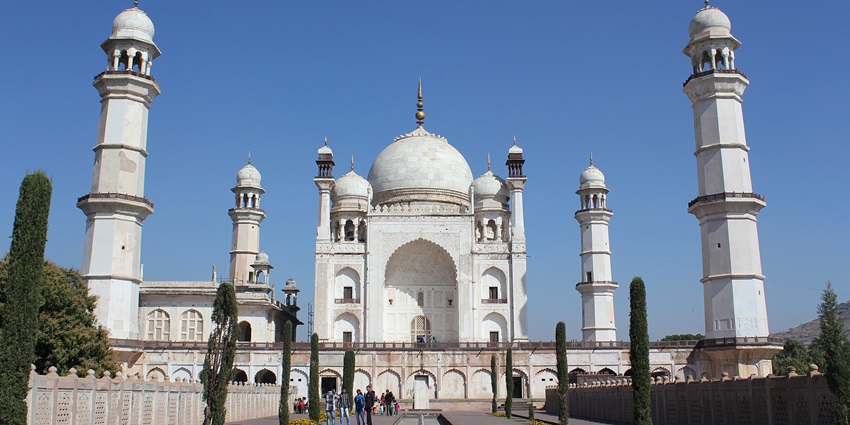
Photo: Arian Zwegers / Wikimedia Commons
Bibi Ka Maqbara, situated approximately 17 km from Daulatabad Fort in Aurangabad, is a remarkable Mughal monument often dubbed the “Taj of the Deccan”. Constructed by Aurangzeb’s son, Azam Shah, in honour of his mother, Dilras Banu Begum, this mausoleum has a striking resemblance to the renowned Taj Mahal. However, despite its smaller dimensions, it enchants visitors with its splendid marble dome, intricately designed minarets, and lush gardens. This represents the architectural grandeur of the Mughal era and provides a tranquil experience for those interested in Mughal history and art.
Timings: 8 AM – 6 PM
Entry Fee: ₹25 (for Indians), ₹300 (for foreigners)
3. Grishneshwar Temple
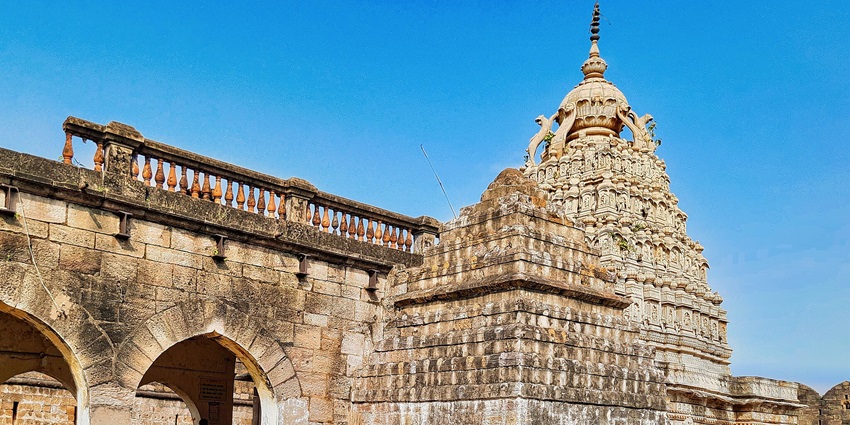
Photo: Ms Sarah Welch / Wikimedia Commons / Image For Representation Only
Located approximately 28 kilometres from the Daulatabad Fort, the Grishneshwar Temple is one of the twelve Jyotirlingas dedicated to Lord Shiva. This designation makes it a profoundly important pilgrimage destination for Hindus. Constructed in the 18th century, the temple showcases intricate carvings alongside a grand stone structure that exemplifies the traditional architecture of the Maratha period. Its spiritual atmosphere draws in both devotees and tourists. Furthermore, its proximity to the Ellora Caves enhances its appeal as a convenient stop on a historical and spiritual journey through the region.
Timings: 5:30 AM – 9:30 PM
Entry Fee: N/A
Suggested Read: Top Mahalakshmi Temples In Maharashtra
4. Panchakki
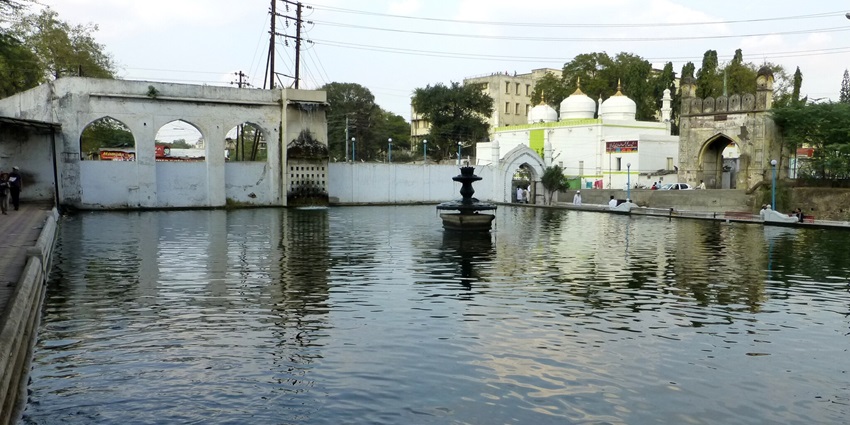
Photo: Hiroki Ogawa / Wikimedia Commons
Panchakki, situated approximately 16 km from Daulatabad Fort, is a majestic feat of engineering from the 17th century. This ancient water mill was constructed to grind grain for pilgrims who visit the Dargah of Baba Shah Musafir. Powered by an underground water channel that originates from a mountain stream more than 8 km away, it highlights innovative design. The site features a beautiful garden, a mosque, and a reservoir, creating a peaceful retreat in the region of Aurangabad. Although many may overlook its historical significance, Panchakki showcases the ingenuity of mediaeval engineering and offers visitors a tranquil experience.
Timings: 6 AM – 6 PM
Entry Fee: ₹10 (for Indians), ₹100 (for foreigners)
5. Aurangabad Caves

Photo: Pexels / Pixabay / Image For Representation Only
Situated approximately 20 kilometres from the historic Daulatabad Fort, the Aurangabad Caves consist of a collection of 12 rock-cut Buddhist shrines that were sculpted between the 2nd and 6th centuries. Although they are smaller in scale when compared to the adjacent Ajanta and Ellora Caves, these caves hold significant value due to their intricately carved figures, many of which illustrate scenes from Buddhist stories. The caves provide sweeping views of Aurangabad, making them ideal for individuals seeking peaceful, more intimate encounters with ancient Buddhist artistry.
Timings: 9 AM – 6 PM
Entry Fee: ₹10 (for Indians), ₹100 (for foreigners)
Suggested Read: Kanheri Caves National Park
Where To Stay
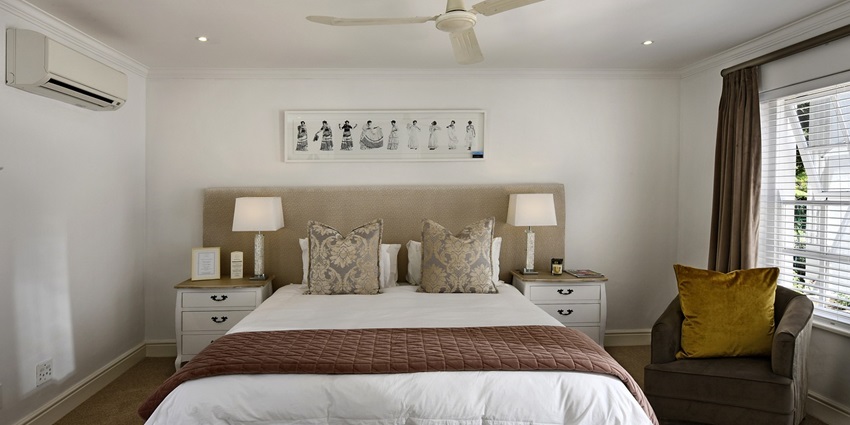
Photo: peterweideman / Pixabay / Image For Representation Only
In Aurangabad, visitors can find a plethora of accommodation options. Vivanta Aurangabad, for instance, provides not only luxurious rooms but also excellent facilities; its proximity to key attractions, such as Bibi Ka Maqbara and the Ellora Caves, is particularly noteworthy. Lemon Tree Hotel caters to mid-range travellers, offering modern amenities that suit both families and business professionals. However, for those on a tighter budget, Hotel Riviera Executive presents clean rooms and basic services at relatively affordable rates. Although it may not provide the same level of luxury, the Ellora Heritage Resort, situated near the Ellora Caves, serves as a commendable choice.
Where To Eat

Photo: Pexels / Pixabay / Image For Representation Only
Visitors in proximity to Daulatabad Fort can discover a plethora of dining choices in Aurangabad, which lies merely 16 km away. For those seeking authentic Maharashtrian cuisine, Thaat Baat is the destination to consider serving local delicacies such as Puran poli and Bhakri. Tandoor Restaurant and Bar presents North Indian and Mughlai dishes with a pleasant ambience. However, for vegetarians, Kailash Veg restaurant, where one can find an assortment of Indian and Chinese dishes. Additionally, Ellora Restaurant, situated near the caves, offers commendable food options for explorers of the region.
Suggested Read: Nimgiri Fort
Best Time To Visit
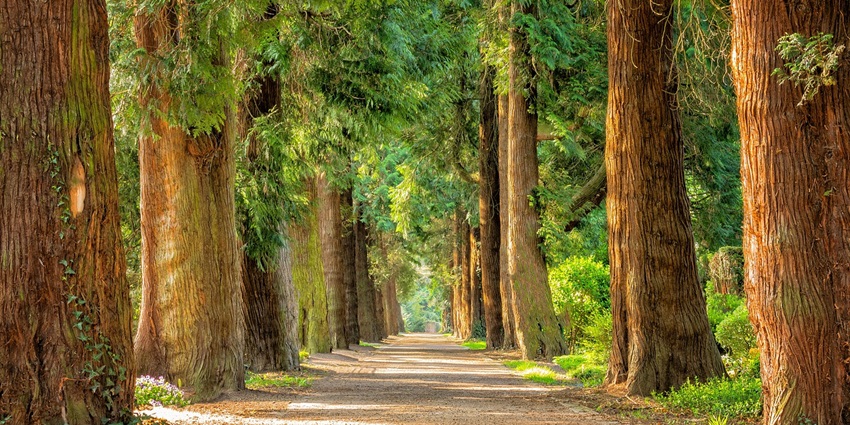
Photo: Tama66 / Pixabay / Image For Representation Only
The best time to visit Daulatabad Fort is in winter, specifically from November to February. During this period, the weather is pleasant, thus offering ideal conditions for fort exploration and visits to nearby attractions. Temperatures typically range between 10°C and 25°C; this range creates a comfortable climate for sightseeing. However, summer can be intensely hot, with temperatures often exceeding 40 °C. Consequently, outdoor activities become challenging. The monsoon season brings moderate rainfall, enhancing the landscape’s greenery, but trekking up the fort can be quite difficult due to slippery conditions.
Other Factors To Consider
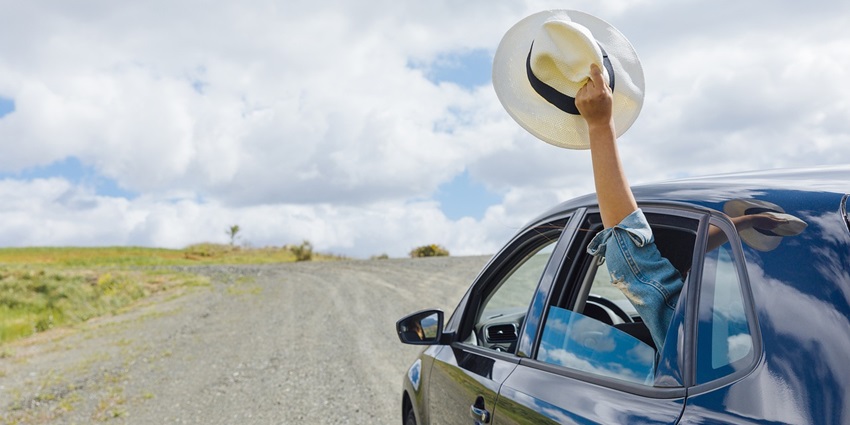
Photo: tekhnika / Pixabay / Image For Representation Only
When planning a trip to Daulatabad Fort, many factors need to be taken into account for an enjoyable and unforgettable experience:
Average Cost Of The Trip:
A trip to Daulatabad Fort, which includes transport, accommodation, and food, generally costs between ₹3,000 and ₹7,000 per individual for a trip lasting 2 to 3 days. This variation depends on one’s selection of lodging and dining options. Luxury travellers, however, should anticipate expenditures of approximately ₹10,000 to ₹20,000 per person, particularly when opting for high-end hotels and guided excursions.
Tips For Travellers:
- Wearing comfortable shoes is essential as the fort features steep ascents and rugged terrain. So, choose sturdy footwear that is suitable for trekking.
- Carry water and snacks as the fort’s elevated position limits the availability of food stalls. Hence, bringing your own provisions ensures you remain energised during longer exploration periods.
- Planning for early mornings can be beneficial, especially in summer, when the afternoons are often scorching. This helps you avoid both crowds and excessive heat.
- Visit during the early morning or late afternoon which is ideal as the lighting is softer, allowing you to capture stunning Daulatabad Fort pictures.
- Hire a local guide to understand the complex history and details of Daulatabad Fort.
Suggested Read: Shrivardhan Fort
A visit to Daulatabad Fort offers an immersive journey into India’s mediaeval past enriched by stunning architecture and adjacent cultural sites. Whether you are a history buff, a photographer, or simply seeking a weekend getaway, this destination caters to diverse interests. Planning your ideal trip is essential to ensuring a smooth travel experience. Explore TripXL to facilitate your adventure and embrace the history that surrounds you.
Cover Photo: Vikas Singh / Wikimedia Commons


 WhatsApp
WhatsApp
 Twitter
Twitter









